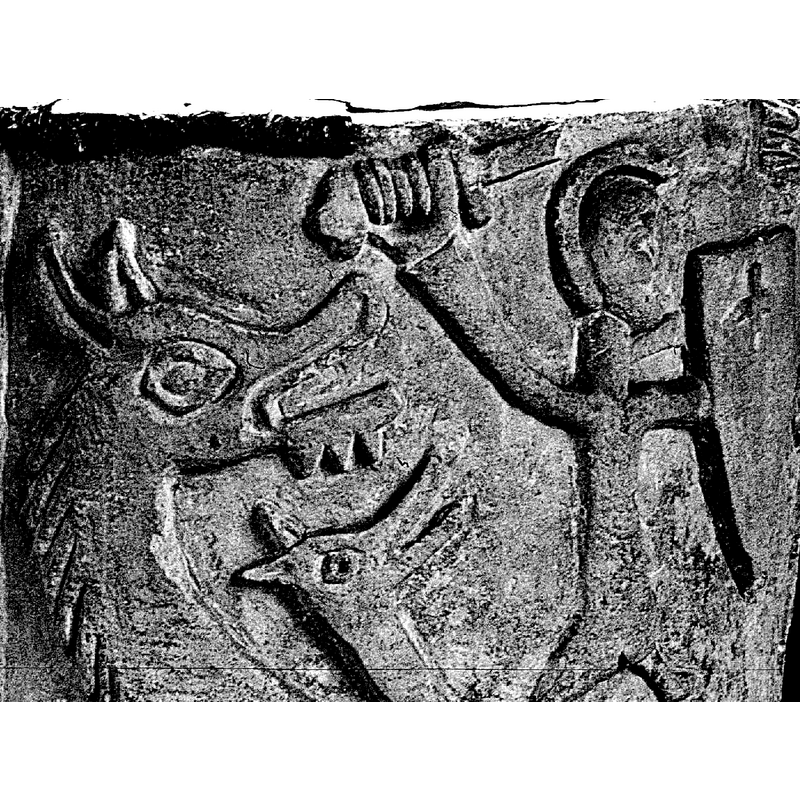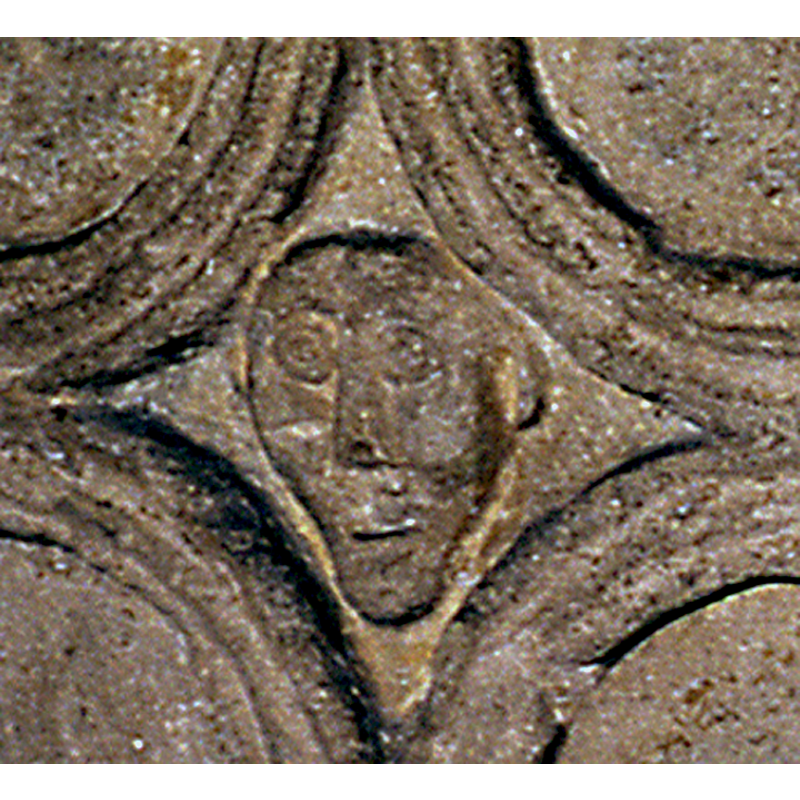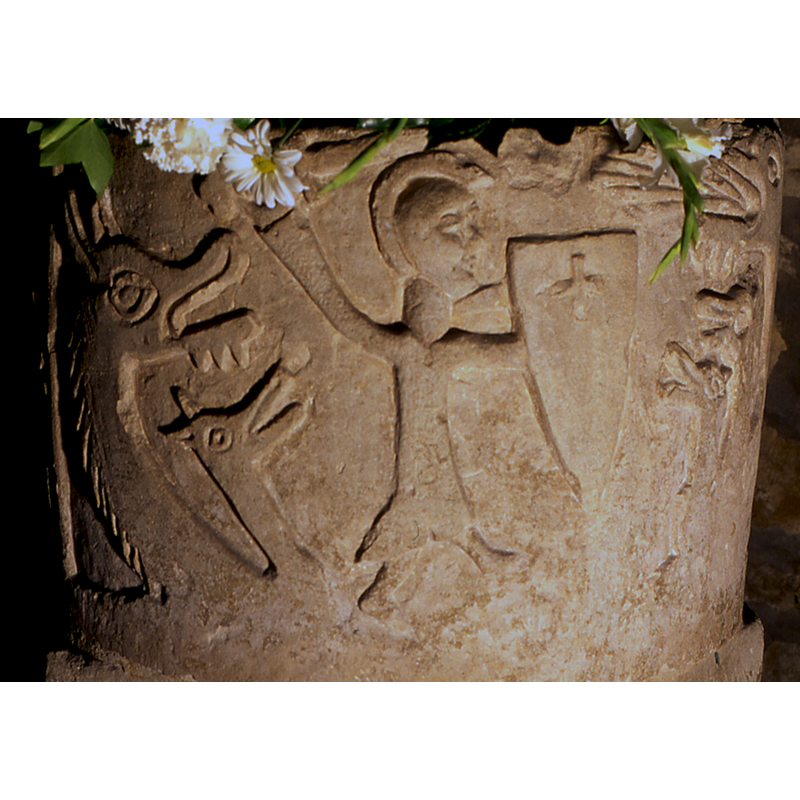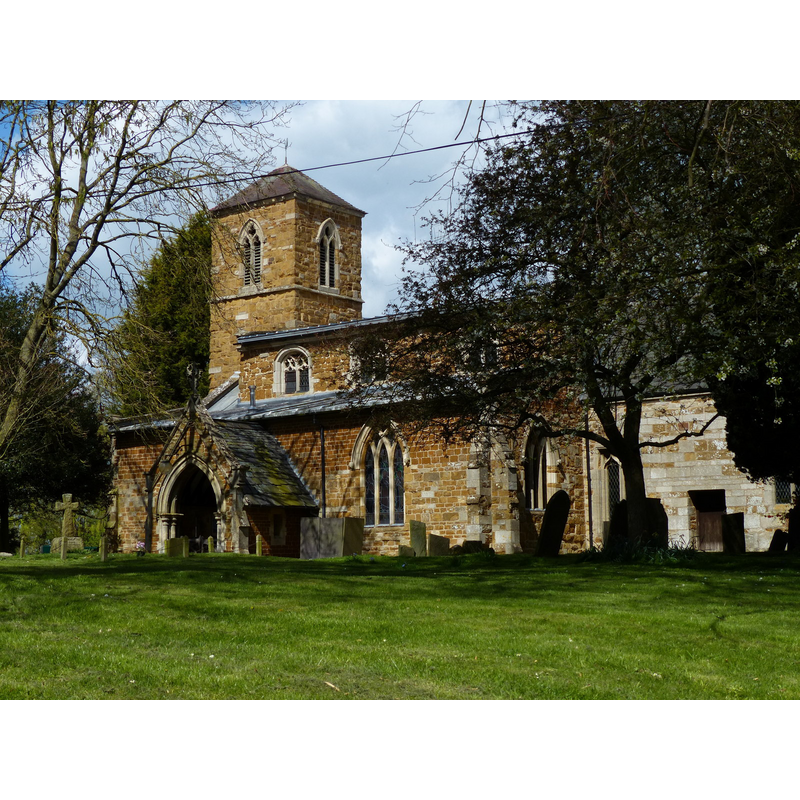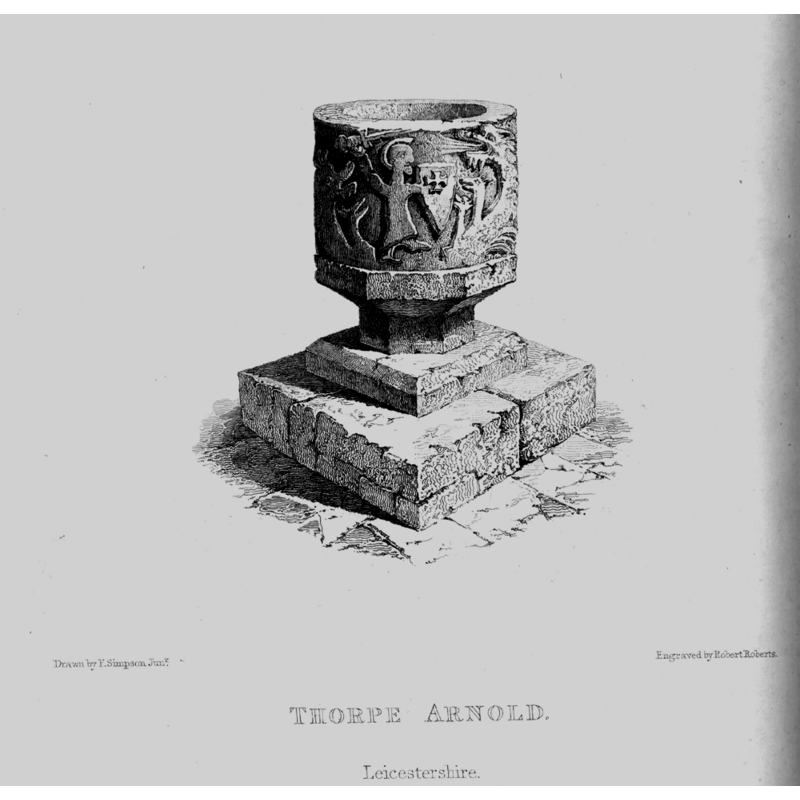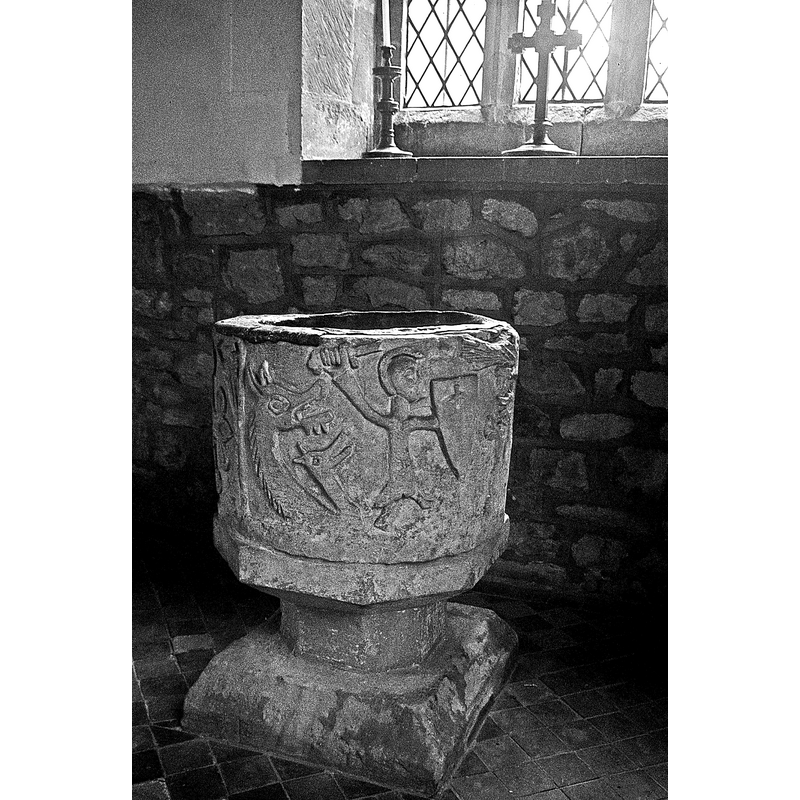Thorpe Arnold / Thorp Arnold / Thorpe Ernald / Torp
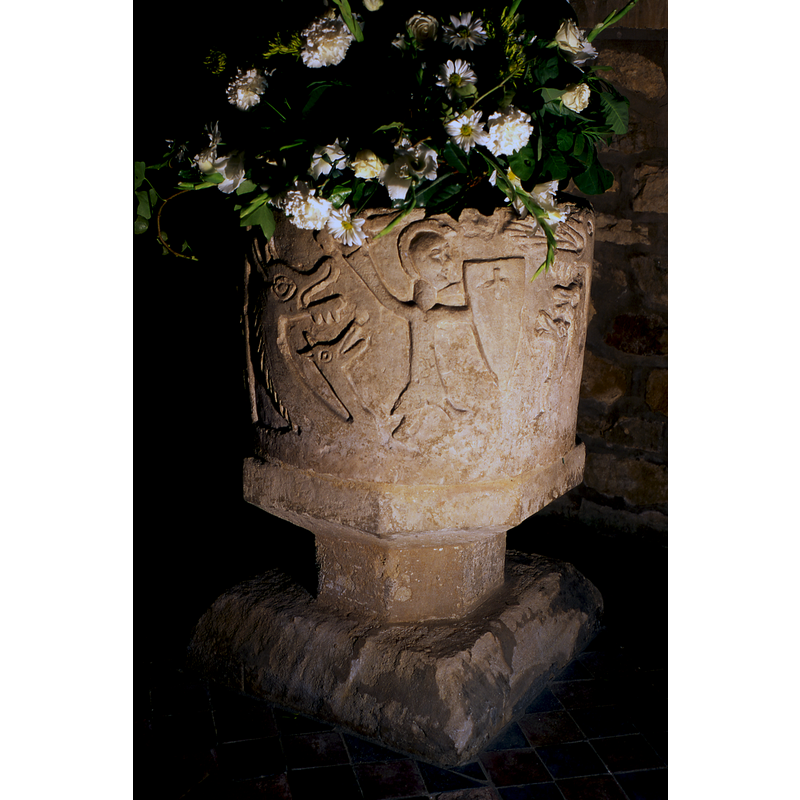
Image copyright © Baptisteria Sacra Index, 2023
Results: 12 records
B01: symbol - cross - Greek - fleurdelysée - in a circle
B02: angel - archangel - St. Michael and dragon - 5-headed dragon
Scene Description: on the sothwest side: five-headed dragon against a haloed St. Michael armed with a sword in his right hand and a shield bearing a cross on it in his left hand; Michael has no wings [is this also a reference to Christ?]
Copyright Statement: Image copyright © Baptisteria Sacra Index, 2023
Image Source: digital image of a photograph taken 25 July 1998 by BSI
B02: angel - archangel - St. Michael and dragon - 5-headed dragon - detail
B03: human figure - head
design element - motifs - unidentified
Scene Description: in the upper right spandrel between the cross and the larger dragon head; probably floral or foliage
Copyright Statement: Image copyright © Timothy Marlow, 2015
Image Source: edited version of a photograph taken 12 September 1981 by Timothy Marlow
Copyright Instructions: Image and permission received (letter of 26 October 2013)
view of basin - west side
view of church exterior - northwest view
view of church exterior - southeast view
view of font
view of font - west side
INFORMATION
FontID: 00164THO
Object Type: Baptismal Font1
Church/Chapel: Parish Church of St. Mary the Virgin
Church Patron Saints: St. Mary the Virgin
Church Location: Lag Ln, Thorpe Arnold, Leicestershire LE14 4SD, UK
Country Name: England
Location: Leicestershire, East Midlands
Directions to Site: Located off the A607 and A606 crossing, just E of Melton Mowbray
Ecclesiastic Region: Diocese of Leicester [formerly in the Diocese of Peterborough]
Historical Region: Hundred of Framland [in Domesday]
Font Location in Church: Inside the church, In the E end of the S aisle
Century and Period: 13th century [basin only] [composite font], Medieval [composite]
Credit and Acknowledgements: We are grateful to Timothy Marlow for his photographs of this font
Font Notes:
Click to view
There are two entries for Thorpe [Arnold] in the Domesday survey [http://domesdaymap.co.uk/place/SK7720/thorpe-arnold/] [accesed 21 February 2015], neither of which mentions cleric or church in it. A font in this church is noted and illustrated in Upcott (1818). Described and illustrated in Simpson (1828): "We are inclined to think that the mis-shapen figures on this Font, are intended to represent the combat between St. Michael and the Great Dragon; Rev. chap. 12. On the other side are two crosses similar to that shewn in the engraving of the Twyford Font, with the addition of human heads in the centre." Simpson reports its location at the time [ca. 1828] as "under the western arch of the south aisle". Poole (1842 and 1848) notes: "the Christian soldier opposing a shield charged with a cross to the attacks of fiery serpents, in which the Christian vow on Holy Baptism is figured [On the font of Thorpe Ernald, in Leicestershire]". Noted by Romilly Allen (1883-1884) as having a representation of the conflict between Good and Evil. Illustrated in a 1893 drawing by Henry E.L. Dryden, in the Sir Henry Dryden Collection, Northamptonshire. Described in Cox & Harvey (1907): this "early font has some rude figure carving, including the combat between St. Michael and the dragon". English Heritage [Listing NGR: SK7704620099] (1968) reports: "Font: Norman, circular, tub-shaped, with knight fighting dragon and two foliated crosses; octagonal moulding to base of bowl low octagonal stem and chamfered plinth." In Pevsner (1984): "Font. Circular, of tub shape. Norman. Two foliated crosses and the figure of a man with a shield and a broken sword fighting monsters." On-site notes: font in two pieces; the basin is cylindrical, mounted on a two-part base; two scenes appear on the sides of this basin: a large 'fleurdelysée' cross in a circle, and a battle scene between St. Michael and a five-headed dragon or hydra. The base appears to be of the same stone but has been recut into another design than the original: it is octagonal and of the same width as the basin at the top, but narows down through a chamfer to become a short octagonal pillar; there is a short and narrow square plinth [NB: in Simpson's time [ca. 1828] the whole appears raised on a second taller plinth, also square; the font now [July 1998] rests on the short plinth and then directly on the ground]. Although the font is dated to the Norman period in some sources based on the earlier style of some of the details, it ought to be dated to the period that the latest motifs belong to, probably the 13th century.
COORDINATES
Church Latitude & Longitude Decimal: 52.773005, -0.859474
Church Latitude & Longitude DMS: 52° 46′ 22.82″ N, 0° 51′ 34.1″ W
UTM: 30U 644395 5849168
MEDIUM AND MEASUREMENTS
Material: stone, type unknown
Font Shape: cylindrical (mounted)
Basin Interior Shape: round
Basin Exterior Shape: round
Drainage Notes: lead-lined
Rim Thickness: 9 cm*
Diameter (inside rim): 52-54 cm*
Diameter (includes rim): 70 cm* / 66.75 cm**
Basin Depth: [30 cm]**
Height of Basin Side: 42 cm*
Basin Total Height: 42 cm* / 65 cm**
Height of Base: 45 cm*
Font Height (less Plinth): 87 cm* / 92.5 cm**
Square Base Dimensions: 62 x 60 cm*
Notes on Measurements: * BSI on-ste / ** Simpson (1828) [NB: large discrepancies in the measurements are probably due to the way the parts are defined]
REFERENCES
Allen, J. Romilly, "Notes on Early Christian Symbolism", N.S., VI, Proceedings of the Society of Antiquaries of Scotland, 1884, pp. 380-464; p. 430fn1
Cox, John Charles, English Church Furniture, New York: E.P. Dutton & Co., 1907
Pevsner, Nikolaus, Leicestershire and Rutland, Harmondsworth: Penguin Books, 1984
Poole, George Ayliffe, A History of Ecclesiastical Architecture in England, London: Printed by Joseph Masters, 1848
Poole, George Ayliffe, The Appropriate Character of Church Architecture, Leeds; London: T.W. Green; Rivington, Burns, and Houlston and Stoneman, 1842
Simpson, Francis, A series of ancient baptismal fonts: chronologically arranged, drwan by F. Simpson, Jun., engraved by R. Roberts, London: Septimus Prowett, 1828
Upcott, William, A bibliographical account of the principal works relating to English topography, London: Printed by Richard and Arthur Taylor, 1818
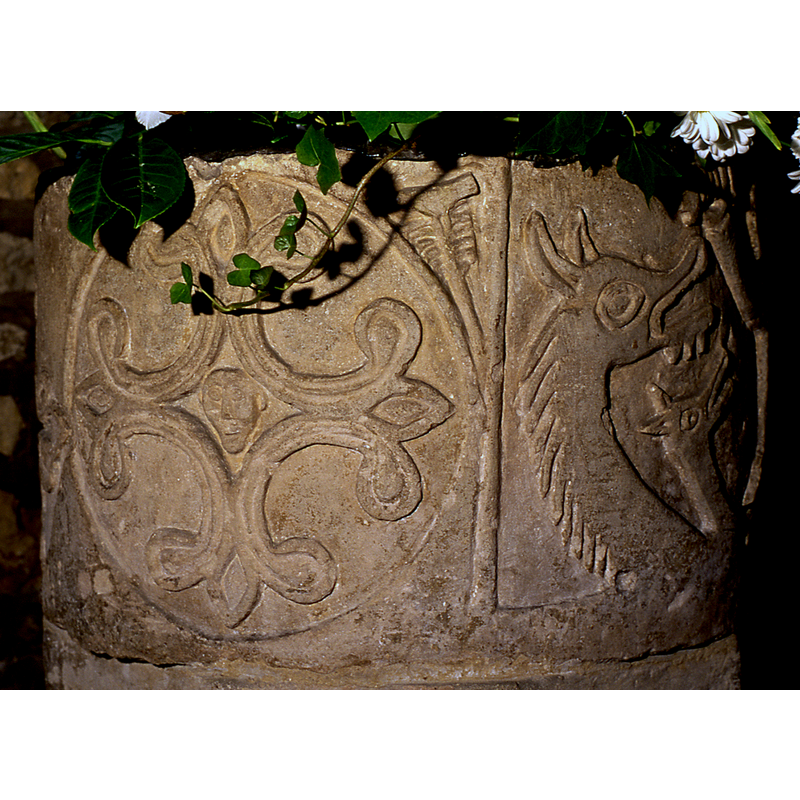
![on the sothwest side: five-headed dragon against a haloed St. Michael armed with a sword in his right hand and a shield bearing a cross on it in his left hand; Michael has no wings [is this also a reference to Christ?]](/static-50478a99ec6f36a15d6234548c59f63da52304e5/compressed/THO9802327_compressed.png)
